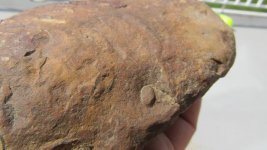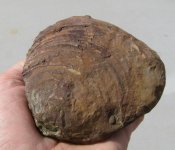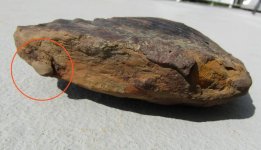Lagoon Island Pearls
Well-known member
- Joined
- Dec 8, 2009
- Messages
- 2,144
The Alberta paleontologists might be interested in the precedent of Kieslinger's Triassic Nautilus blister (specimen never traced despite my best contacts at the time).
Thank you for the references.
FYI, Specimen 1 and 3 are in my possession. Specimen 1 was acquired though an ammonite shop where I issued a bounty on anything resembling pearls. By a stroke of luck, this piece came to them just a few days later. I was scarcely in Alberta four hours, when the specimen fell into my lap. Three days later, discovered Specimen 2, which was retained by the province. the lot of loose pearls and the host shell fragments were ascended to the collection. Specimen 3 has an even more peculiar story. It was issued a disposition last year and cleared to leave the province. It was given to me at my home in Tofino (for it's dogtooth calcite inclusions) just as we departed for our mining season. I wrapped it carefully and didn't look at it until just the other day, only to realize that it also had a fossil pearl concretion identical to the other specimens.
I also discovered a fossil oyster with a loose oval and a blister pearl. Normally oysters are exempt from disposition applications, but one with pearls was novel to the museum, so it was also ascended.
The same mining partner has 4 sea cans filled with certified ammonite sitting on his property near Red Deer. At this point, I'm sure these occur more often than previously thought. Owing the the issue of concretion and absence of aragonite at the surfaces, no one thought to look. Mistaken for septarian nodules? Technically they are that, I suppose. My first duty with the RTM specimen, would be to reconstruct the ammonite. Once I access the sea cans, I'll be able to start with some IDs and with enough specimens begin destructive testing. Meanwhile, I'm working on some surface microscopy. Looking to find micro-fine aragonite at the surfaces of the concretions.
Below is the oyster with pearls.



